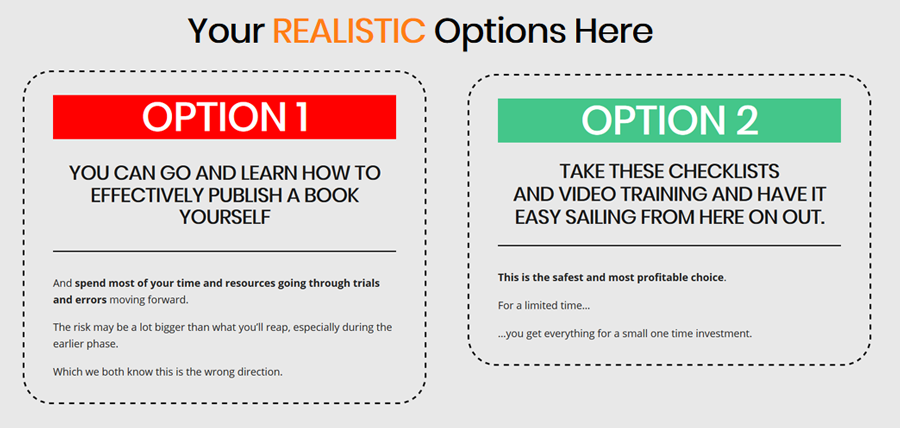
Common practices that make a website lose credibility – the second part
… continue of the first part – How much does it take for a website to lose credibility?
- Mystifying the description of the service, e.g., it is a magical, secret, the untold revealed etc. This wording targets the lower brain, the deepest level of the visitor’s belief system with a potential but unspecified gain.

- Introducing the author/creator/owner as a superman, listing untraceable titles (no link or certificate provided) and also unbacked achievement statements: award-winning wonder, trusted and trained advisor, leading speaker, and multi times #1 bestselling author.

- Using fake personalized/ selected few offer, e.g., claiming ‘half price just for you’ , or posing as a caring ‘friend’ who knows the visitors well. All this, just like the above ones, used in the attempt to trick the primal brain into trust a stranger.
- Displaying engineered testimonials with stock photos of stereotypical rich people suggesting that this is what the visitors would achieve by buying this product/service.
- Displaying fake success numbers, disruptive analytics screenshots of unrecognizable pages, unreadable data, falsely offering a ‘sneak peek’ of success, often used with watermarked screenshots of undistinguishable statistics or an illustration of a statistic.

- Using namedropping is for raising one’s reputation by being shown with already successful people on the same page (usually only mentioning that they have used a ‘similar’ solution, in order to avoid any legal disputes involving the use of their names in a marketing ploy). I have seen website owner listing 21 renowned media personalities using a tool just like his.
- Misusing the FAQ for a further marketing push by not listing real questions. This one actually reveals that there may be no sales history and no questions may have emerged yet.

- Overemphasizing the 100% money back guarantee. While in some cases, especially in the case of physical products, money back guarantee is a working strategy that creates comfort while shopping, in the case of intellectual property, however, such a claim should triggers scepticism and doubt about the value of the product/service since it’s physically not returnable.

- Displaying false package(s) to make the actual (only) one sell better, e.g., option 1: you need to set up everything alone and we don’t give any resources for that, and option 2: you get everything you need, we help with everything, save your soul and buy this. This set-up, as is true of most of the other tricks, pushes the visitors’ primal instinct to stay away from the dangerous, loss-inducing option and choose the safe option of buying.

- Creating self-questioning button labels, e.g., an ‘I don’t want a smart solution’ button (instead of labeling as ‘Cancel’) that would make the visitors feel stupid to click on it. The positive version of if is e.g., ‘Let Me Start Building My Wealth the Smart Way TODAY!’, which would make the visitors feel stupid not to click on it.

- Talking about the owner/author in the third person, as if others would introduce him, mainly used to avoid a shameless plug by creating a false word-of-mouth effect. This ploy is sometimes used in a separated section on an otherwise honest page, but, even in that case, a connection cannot be established with the owner/author since he never talks about himself, remaining unapproachable and alien to the visitors.
- Calling the product a ‘must’ which actually plays with peer pressure and suggests that the visitor is less worthy if he does not have it.
Looking through the list, even reading only a couple of the items, you already have the picture that the majority of these tricks are trying to create trust without proof. In other words, they are attempting to circumvent visitors’ rational minds and appeal to their primal levels, mostly by mocking with their basic fight-or-flight system. The main goal of circumventing the cognitive, rational system is to seal the deal on the emotional level. However, the cognitive system has a general sense of what is going on under it, and when it sniffs out that someone is trying to leave it out of the transaction, it often react with simply shutting down the whole deal. If you’re selling in the premium category, the slightest suspicion that your website is trying to make a deal behind the back of the cognitive mind would likely result in no business being conducted at all.



Lucy Leleon
Very practical, thanks!
Hovic
I absolutely love it!